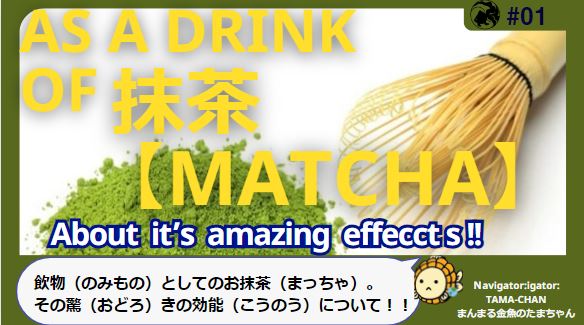
Recently, it has become famous not only at tea parties in Japan but also around the world as a healthy drink, especially among health-conscious New Yorkers.
There are very popular Matcha cafes on the main streets of major cities that are loved by everyone.
Why is Matcha so popular?
CONTENTS:
(1) About the taste and beautiful color of Matcha🍵
(2) Characteristics of Matcha compared to other tea types
(3) About the surprising nutrition of Matcha✨
(4) About the history of Matcha📝
(5) How to make delicious Matcha at your home❓
▶TIKTOK: What are the tips for making Matcha and Japanese sweets even more delicious?
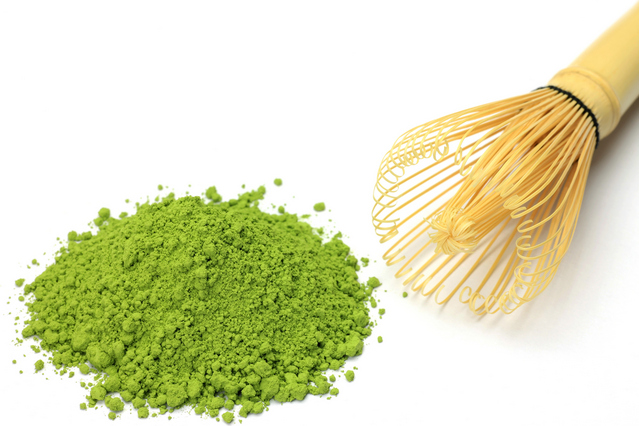
(1) About the taste of Matcha and its beautiful color🍵
The beautiful yellow-green color of matcha is the natural color of the tea leaves, not artificial coloring.
It is bittersweet and has a unique soothing aroma that goes well with milk and other sweets.
Also, since it is in powder form, it is easy to mix it into drinks and sweets.
Therefore, there are a variety of sweets such as matcha milk, matcha latte, matcha ice cream, matcha chocolate, and matcha cake.

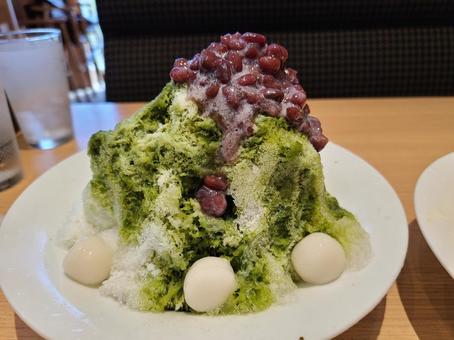
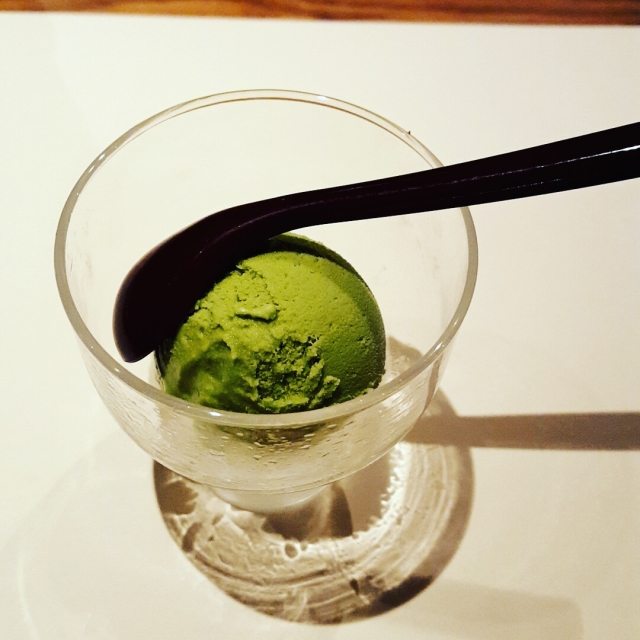
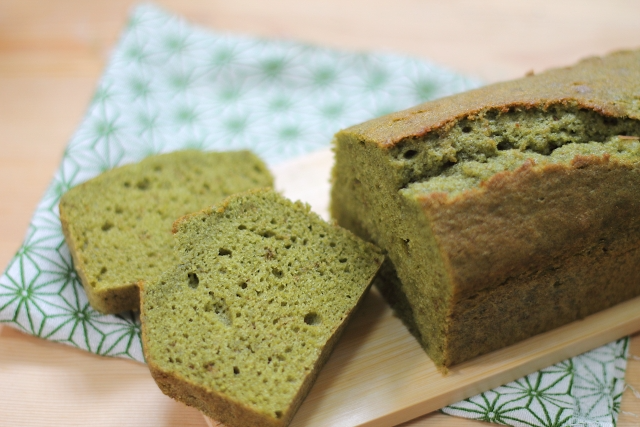
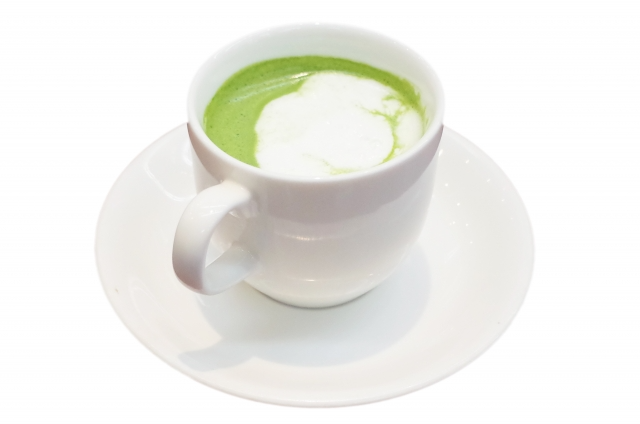
Matcha matches perfectly with various sweets!
That’s why it’s called Match(a)!
No, Tama-chan…
Usually, Matcha is served after sweets in Japanese formal tea ceremonies called お茶会【O-CHAKAI】.
When your mouth become full of sweetness of 和菓子【WAGAHI(WA-Sweet)】,which might be too sweet, then rinse your mouth with slightly bitter Matcha.
Then, sweetness in your mouth disappeared and it’s very refreshing and so tasty.
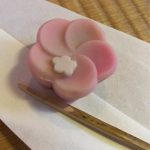

(2) About the characteristics of how to make Matcha and its nutrition🍃
By the way, do you know that 緑茶【GREEN TEA】,紅茶【RED(BLACK)-TEA】, 烏龍茶【WOOLONG-TEA】and 抹茶【MATCHA】are all made from the same tea leaves?
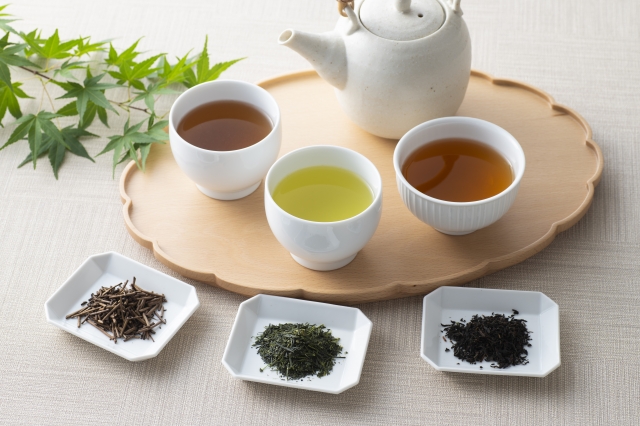

The difference is whether they are fermented or not.
Green tea is unfermented tea, black tea is fermented tea, and oolong tea is semi-fermented tea.
So what about matcha? In that respect, matcha is a “non-fermented” tea.
To stop fermentation, heat is added by steaming.
The reason why matcha’s bright yellow-green color remains vivid and beautiful is because the color does not change as fermentation progresses.
Matcha is made by grinding the tea leaves into a fine powder using a stone mill, making it very nutritious. β-carotene, vitamin E, dietary fiber, etc. are difficult to extract from 緑茶【RYOKU-CHA(Green Tea)】 because they are difficult to dissolve in water, but with Matcha, you can consume the whole tea.
Furthermore, it is said to contain twice as much catechin as green tea and more than 10 times as much theanine.
Furthermore, Matcha is cultivated by かぶせ茶【KABUSE-CHA(Covered Tea)】way, which is the way to grow tea trees covered with straw mats called Yoshizu and make shades.
It works to prevent the loss of very important nutrition Theanine, which will be explained later.
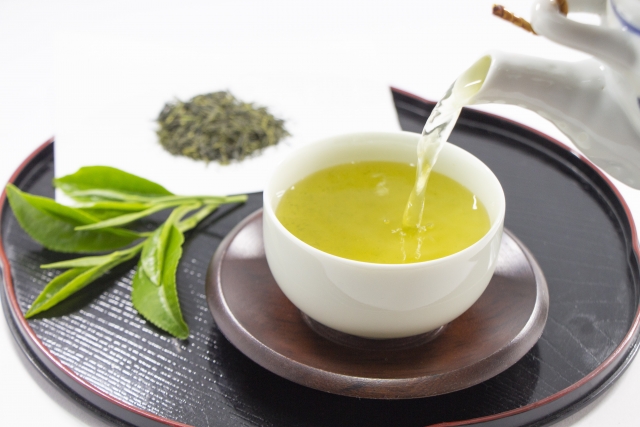
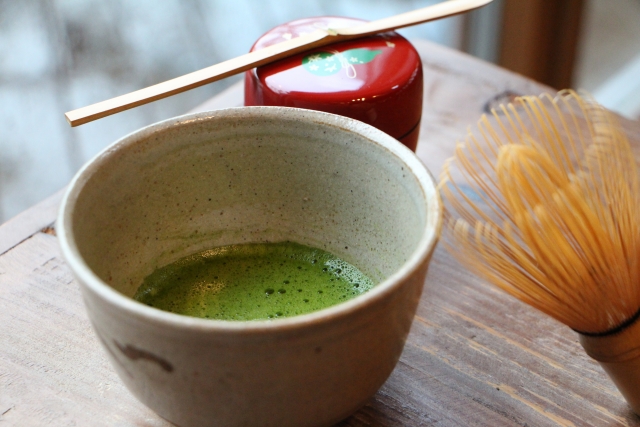
(3)About nutrition of 抹茶【MATCHA】✨
It has antioxidant effects, prevents colds, anti-aging, diet effects, and the noteworthy deep relaxing effect!
●Vitamin C/antioxidant effect, cold prevention
●Vitamin E/Antioxidant effect, blood circulation promotion, anti-aging
●Lutein/antioxidant, deposits in the eye retina and protects the eyes from blue light
●Vitamin K/bone protein activity, bone formation activity
●Dietary fiber/ constipation improvement, diet effect, etc.
●Catechin/relaxing effect, antiviral effect
★Caffeine/Awakening effect, fat burning effect
★Theanine/antioxidant effect, obesity prevention
About the vitamins contained in matcha
Matcha contains lutein and vitamin K, which green tea does not have. A cup of matcha contains approximately 1 mg of lutein. Lutein has antioxidant effects. It is deposited in the retina of the eye and is known to protect the eye from blue light. It is an important component that cannot be synthesized in the body, so it must be obtained from the diet. A cup of matcha can also provide you with 29% of your daily recommended intake of vitamin K. Vitamin K is a nutrient that is also found in spinach, komatsuna, and natto. It is also said to be used as a treatment for osteoporosis because it activates bone proteins and promotes bone formation.
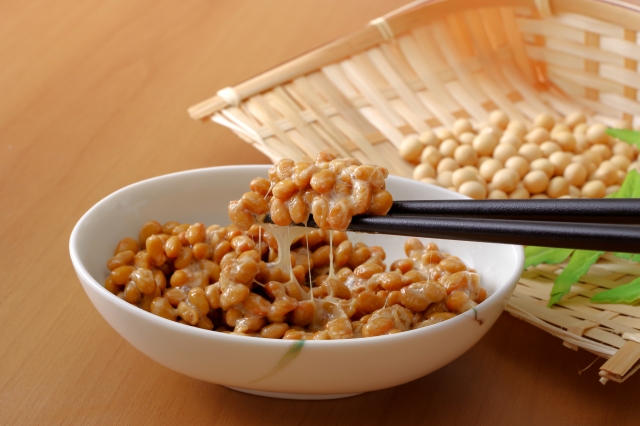
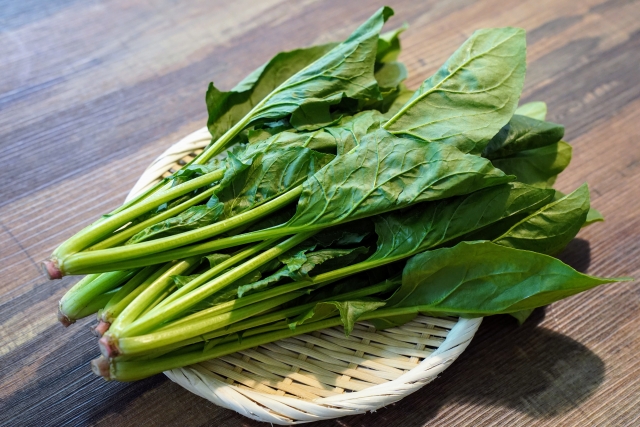
In addition, the group that consumed Matcha had an increase in bifidobacteria in their stools compared to the group that did not, and an improvement in dynamic visual acuity was also confirmed. It seems that you can expect more effects if you take it in conjunction with exercise.
About anti-aging effects💖
抹茶【Matcha】contains high levels of antioxidants. This antioxidant effect oxidizes cells in the body and removes active oxygen that causes aging and disease, so it can be expected to be effective in preventing age spots and wrinkles.
Matcha is made by grinding whole tea leaves into powder, so it can be said to be more concentrated in antioxidants.
The concentration is said to be higher than blueberries, leafy vegetables, and nuts, which are said to be rich in antioxidants!

About diet effects💪
抹茶【MATCHA】 contains “catechin”.
Catechins are said to help burn fat and inhibit fat absorption. In addition, the “caffeine” contained in Matcha can also be expected to have a fat burning effect.
And “dietary fiber” has the effect of regulating the intestinal environment and improving bowel movements.
By properly incorporating matcha into your daily life, you can expect to have positive diet effects.
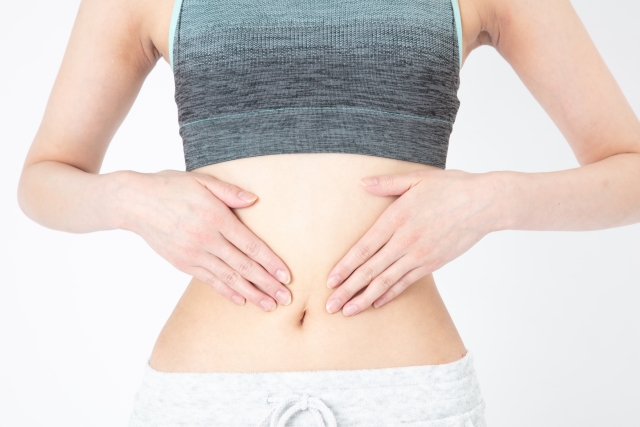
About cold prevention effects🤧
It is said that it becomes difficult for viruses to attach to cells and make it difficult for them to multiply. Matcha also contains vitamin C, so it can be expected to prevent colds in this point,too.
The noteworthy relaxing effect of “theanine”
抹茶【MATCHA】is rich in Theanine.
As mentioned above, Theanine is also said to have a relaxing effect.
Experiments have shown that the brain waves of people who took theanine had more alpha waves, which are seen in a relaxed state. The refreshing feeling after drinking tea is said to be due to the relaxing effect of Theanine.
It is also expected to suppress increases in heart rate and blood pressure caused by stress, and improve sleep quality and concentration.
Theanine is a type of amino acid.
Theanine is also a type of umami component that provides 旨味【UMAMI(deliciousness)】and slight sweetness.
Matcha can be said to be a delicious and relaxing drink thanks to Theanine.

ESSAY: About history with relationship of 抹茶【MATCHA】and 瞑想【MEISOU(Meditation)】.
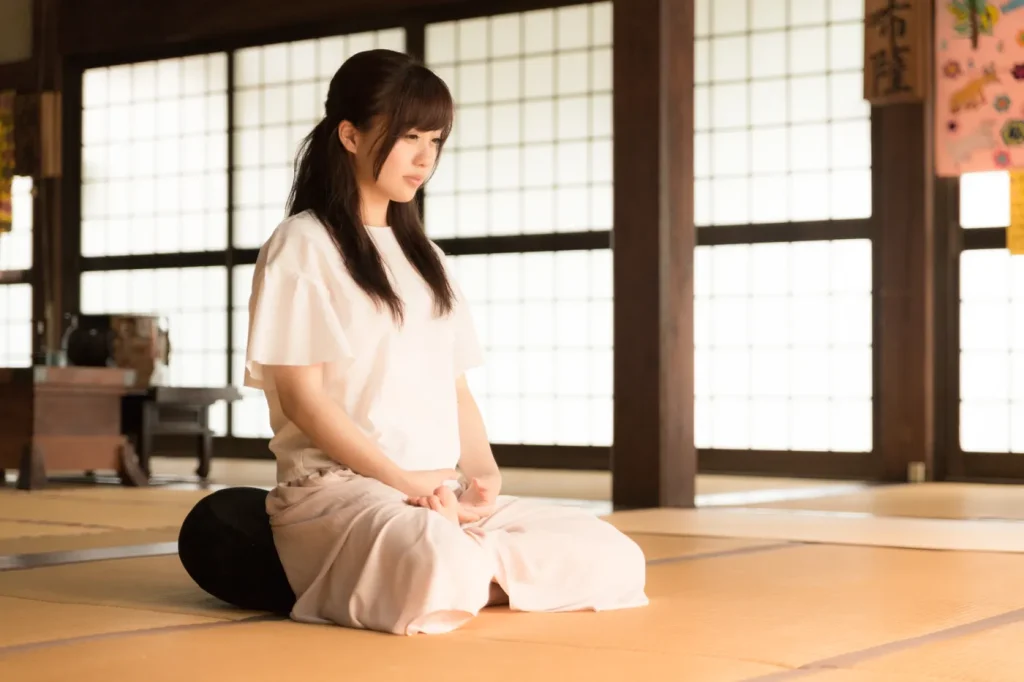
Tea was brought to Japan from the Tang Dynasty by envoys from the 7th century to the 9th century. In the early days, people used to shave small chunks of fermented tea leaves called 団茶【DAN-CHA】or 餅茶【BEI-CHA】, boil them, and drink them.
When tea first entered Japan, it was drunk as a medicine for health and longevity. It was very expensive and could only be drunk by noble people such as emperors, aristocrats, and high priests.
There are records Mr.実朝【SANETOMO】, the second Kamakura 将軍【SHOGUN(Samurai Leader)】taking it as a hangover medicine.
In Japanese language, things are counted followed by their each different particles.
抹茶【MATCHA】is not counted by 杯【Hai】which is ordinally used to count beverages or drinks, but using 服【Fuku(puku)】which is for medicines.
And in Zen temples, Zen monks drank tea in rituals for meditation. It is no wonder that the tea ceremony came to be heavily influenced by Zen Buddhism.
▶About the relationship between tea ceremony and Zen Buddhism
▶About the history of matcha
Theanine also contributes to Zen meditation by making our mind more calm and relaxed.
The important point about the relaxing effect of theanine is that unlike caffeine, which stimulates our movements by stimulating the sympathetic nervous system, theanine “relaxes” our nerves by stimulating the parasympathetic nervous system.
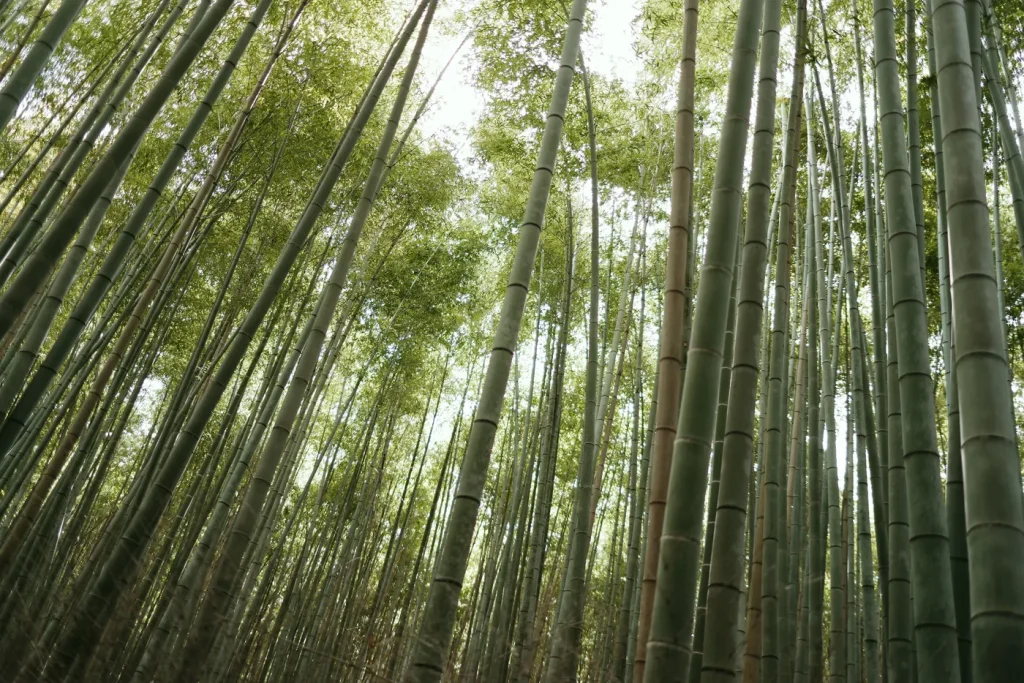
Therefore, matcha is recommended as a drink that promotes deep relaxation and calming of the nerves in daily life, increasing concentration through calm rather than excitement.
Image of a businessman drinking coffee:
have to do my best! hurry up!
This and that too!💦
Image of a businessman drinking Matcha:
In the heightened and comfortable sense of tension,
I’m calm and focused on my work…🍵
CONCLUSION:
抹茶【MATCHA】 is made from whole tea leaves, so it is rich in nutrients! !
It is rich in vitamins and dietary fiber, and is said to have beautifying effects and even regulating the intestines.
Especially, special mention is the mixture of stimulant effect of Caffeine and the relaxing effect of Theanine. You can obtain the ideal mental balance by it.
I would like to recommend that you get into the habit of drinking it in your daily life and live more healthy, fulfilled, mindfulness life♪
◇These are sites about the nutrition of Matcha that I used as a reference.
▶https://choice-suppli.com/info/
▶https://vegewel.com/ja/style/matcha
▶https://business.nikkei.com/atcl/gen/19/00283/093000052/

Leave a Reply